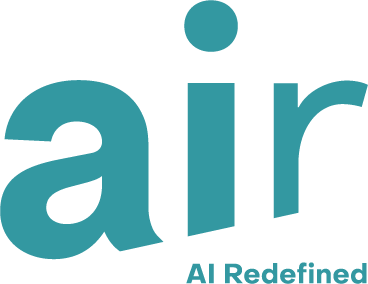Human-Involved AI in Real Time: What it’s Like to Train with Cogment
Last week, we kicked off a blog series that explores what makes our company, AI Redefined (AIR), different. We discussed how AIR’s Cogment framework can be useful to human-AI teaming in a high-stakes use case: fighting wildfires.
In this post, I’d like to discuss why real-time, continuous training creates better AIs. Human interactions and continuous adaptation – all within the Cogment platform – ensure that AIR’s customers don’t have to spend years of engineering efforts to make solutions possible. We call our approach human-involved AI.
Human-involved AI
In almost all current systems, humans interact in two ways with AI:
A human modifies a massive amount of annotations and labels of datasets with low information density (for instance, by identifying whether or not “this image is a cat”), a simplistic task; or
A human (re)calibrates the AI’s processes, which requires expertise in AI.
What is missing from such interactions is the opportunity for humans to contribute their more complex domain knowledge to AI training. Such knowledge is often useful when applied synchronously.
With AIR’s Cogment, we enable the direct incorporation of domain expertise by:
supporting high-bandwidth (ie. multimodal) full interactions that involve multiple AI agents,
orchestrating these interactions continuously, and
fusing AI performance with human expertise and normal operation of the system.
What does Cogment-powered training look like in practice? In autonomous driving, for example, Cogment can enable a human to take the wheel from the automated system to show how to properly do maneuvers, in real time. The AI draws apprentice-like knowledge from the human’s continuous actions, leading to the AI’s learning and improvement. (We discuss more Cogment use cases in our white paper as well as in its executive summary).
Contrast this approach with that of training an autonomous driver AI with many sensors and deploying the fully-trained AI in iterative batches using OTA (over-the-air) updates. In such a training scenario, rule-based systems could be used to query the sensors to make the right decisions. The AI resulting from such a process is technically human-trained, but not in real time.
Training with Cogment is different. To use another analogy, our autonomous driver solution would be like a batting coach standing with a hitter offering suggestions, changing the grip and suggesting what type of pitch the batter may see next, with each and every pitch. The frequency of these suggestions is another factor that sets Cogment apart. In contrast, the sensor-based autonomous driving AI, in the example above, would be a batting coach giving updates and suggestions once a week, or once a month, similar to many OTA solutions that you might see.
Aiming for more than just better AI
Human-involved AI is even more important when the use case is sensitive and involves human safety. In the case of drones, for instance, it’s well known that you can train AI to reach objectives through methods like Reinforcement Learning (RL). This iterative approach on its own, however, can only account for human behavior and interactions through rough simulacra. AIR’s Cogment (which supports human-involved RL) can change a drone’s training so it can adapt its behaviors immediately based on what the human pilot is doing, while still attempting to accomplish its overall objectives.
Finally, our human-involved solutions are distinctive in that they are supported by an open-source systematic framework. In contrast, another organization seeking to develop similar, proprietary tools from scratch would have to launch a significant, tailored engineering effort, which could take years. Moreover, such development efforts might have to be redone for each additional project that requires real-time training capabilities. We consider the systematization of our human-involved, continuous approach through a publicly-available platform to be unique at present.
So, let’s collaborate. Cogment’s tech-agnostic and flexible approach is ready out of the box (at cogment.ai) and can work seamlessly with your organization’s tools. We’re ready to bring human-involved AI to your AI and non-AI systems. We’re keen to continue the conversation on how we can bring context to AI.

